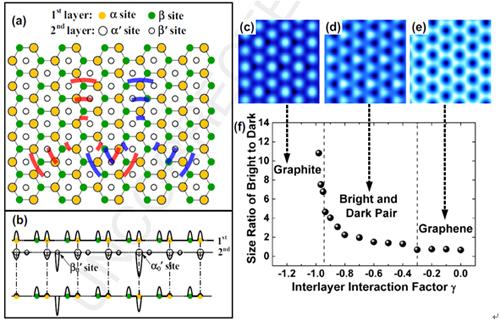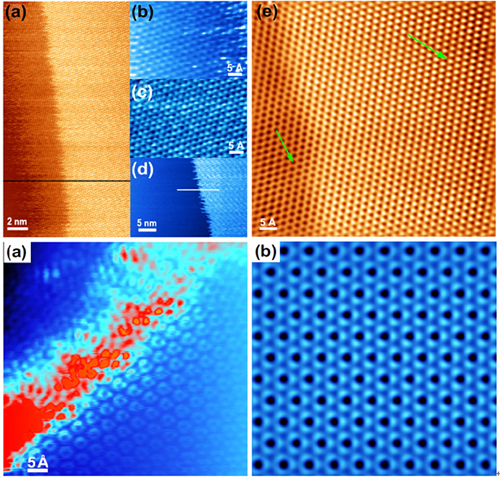Up to recent times, it has been poorly understood how the underlying atoms interplay the surface electronic states. Recently, the group of Prof. Qingyou Lu (from the HMFL and USTC, Chinese Academy Sciences) proposed a “collective interference” model, which can quantitatively study their relationship by introducing an interlayer-interaction factor. This work was published online in Carbon.
For the first time, the researchers observed an atomically resolved underlying edge dislocation that occurred in the second layer of graphite, using a high- quality homebuilt scanning tunneling microscope (STM). It showed evidence of variable interactions between the topmost two layers near the dislocation edge. Through a special thermal process, we further demonstrated a variety of STM features scanned near grain boundaries. A simple collective interference model was proposed to explain these features. It views an STM image as the interference result of the electron waves in the first layer scattered by the potentials that come from the atoms in the first two layers with the second layer contribution being modified by some interlayer interaction factors. This model could correctly simulate all the observed features and revealed that the degree of the interlayer interaction. This study thus provides a method of quantitatively studying interlayer interactions at the atomic level.
This work was supported by the project of the Chinese National High Magnetic Field Facilities, the fundamental research funds for the central universities and the National Natural Science Foundation of China.
Paper link: http://authors.elsevier.com/a/1Q9Qb1zU9zhgy
|

|
| (a) The collective interference model on graphite. (b) Final scattering potential on the surface formed by the superposition of the potentials from the first two layers. (c)- (e) are the simulated images by several interlayer -interaction factors ( see in (f)). |
|

|
|
The upper images:(a) - (e) the atomically resolved edge dislocation in the graphite second layer, measured bySTM.The lower images: the O-ring superstructure near a grain boundary and its simulation by the collective interference model. |